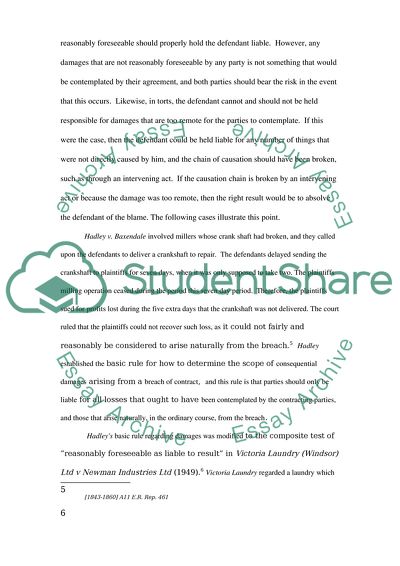Cite this document
(“The law of contracts and the law of torts Essay”, n.d.)
Retrieved from https://studentshare.org/law/1410970-law-of-obligation-taskhow-does-remoteness-differ-in-the-assessment-of-liability-in-contract-and-tortcompare-contributory-negligence-in-tort-with-the-duty-to-mitigate-in-contract-how-are-the-test-similarhow-do-they-differ
Retrieved from https://studentshare.org/law/1410970-law-of-obligation-taskhow-does-remoteness-differ-in-the-assessment-of-liability-in-contract-and-tortcompare-contributory-negligence-in-tort-with-the-duty-to-mitigate-in-contract-how-are-the-test-similarhow-do-they-differ
(The Law of Contracts and the Law of Torts Essay)
https://studentshare.org/law/1410970-law-of-obligation-taskhow-does-remoteness-differ-in-the-assessment-of-liability-in-contract-and-tortcompare-contributory-negligence-in-tort-with-the-duty-to-mitigate-in-contract-how-are-the-test-similarhow-do-they-differ.
https://studentshare.org/law/1410970-law-of-obligation-taskhow-does-remoteness-differ-in-the-assessment-of-liability-in-contract-and-tortcompare-contributory-negligence-in-tort-with-the-duty-to-mitigate-in-contract-how-are-the-test-similarhow-do-they-differ.
“The Law of Contracts and the Law of Torts Essay”, n.d. https://studentshare.org/law/1410970-law-of-obligation-taskhow-does-remoteness-differ-in-the-assessment-of-liability-in-contract-and-tortcompare-contributory-negligence-in-tort-with-the-duty-to-mitigate-in-contract-how-are-the-test-similarhow-do-they-differ.


